Native or Not? Hawaiian Birds Aren't Always What They Seem
Hawaii is full of colorful and striking birds. But Hawaiian birds aren't always what they seem. Many of them don't belong: Brought from other countries in the 19th and early 20th centuries as pets or to control pests, more than 50 introduced bird species have now established populations. Some of them have had a devastating impact on the state's native birds.
Few people, even those who live in Hawaii, know which species are native and which are not—in part because introduced birds dominate the developed areas where most people live, while native birds are mostly restricted to the high, remote forests. Yet knowing the difference is key to mobilizing public support for the conservation of native birds.
Which of the below Hawaiian birds are native, and which are not? The answers might surprise you!
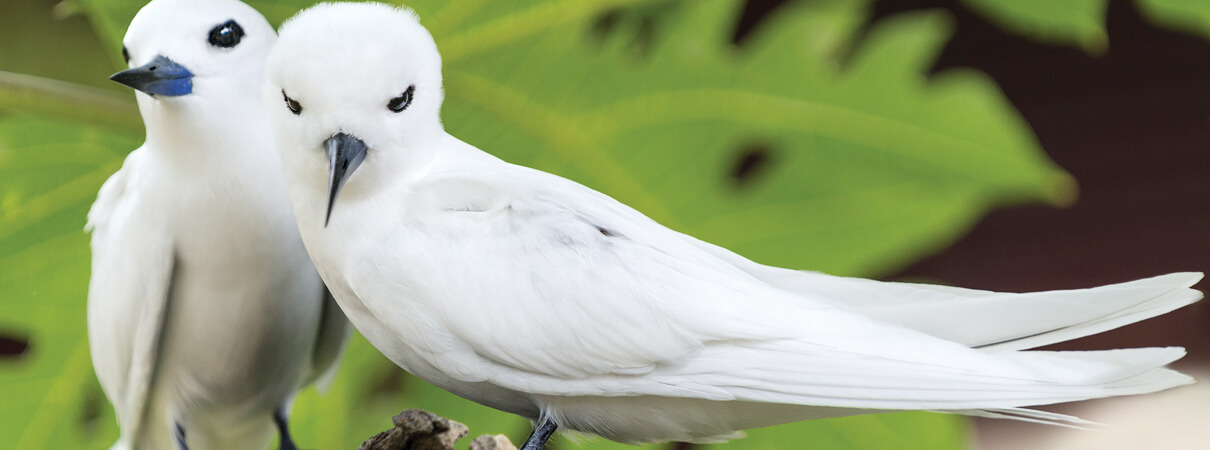
White Terns by Serge Vero, Shutterstock
White Tern (Manu-o-Kū)
NATIVE. Most of Hawaii's White Terns are found in the remote Northwestern Hawaiian Islands, but one of the easiest places to see this tropical seabird is downtown Honolulu. Why they do not live elsewhere in the main Hawaiian Islands—and why Honolulu is apparently the only place within their range where they nest in an urban setting—remains a mystery. White Terns raise their young in large trees but do not build a nest, instead laying a single egg on a bare branch. Now numbering more than 800 breeding pairs, the White Tern was named the official bird of Honolulu in 2007.

Red-billed Leiothrix by Wang Li Quiang, Shutterstock
Red-billed Leiothrix
INTRODUCED. The Red-billed Leiothrix arrived in Hawai‘i in the early 20th century. Found in the Himalayas, from Nepal and northern India to southern China and Myanmar, they are popular cage birds. Hawai‘i is one of the only places in the world with an established, introduced population. They may compete with native species for food, carry avian malaria, and disperse non-native plant seeds.
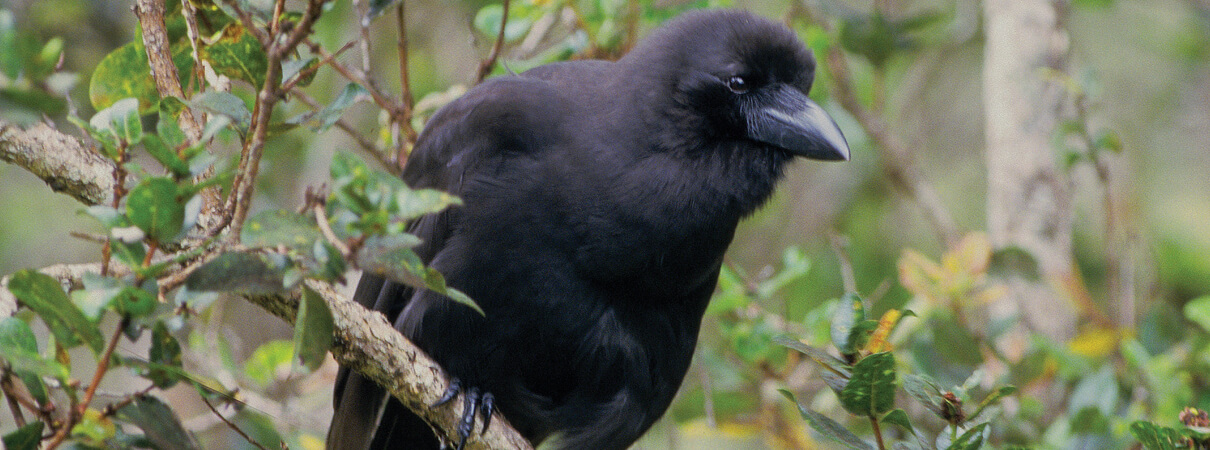
'Alala (Hawaiian Crow) by Jack Jeffrey
'Alalā (Hawaiian Crow)
NATIVE. Hawaii's rarest bird is down to just 114 individuals, all in a captive breeding program. This highly social crow was never common, living only in moist forest on the slopes of the Hualālai and Mauna Loa volcanoes on Hawai‘i Island. Over the past two centuries, destruction of habitat, and persecution by ranchers—along with non-native predators, avian malaria, and toxoplasmosis transmitted by feral cats—have taken their toll. Scientists are now working to prepare habitat for the release of 'Alalā back into the wild later this year.
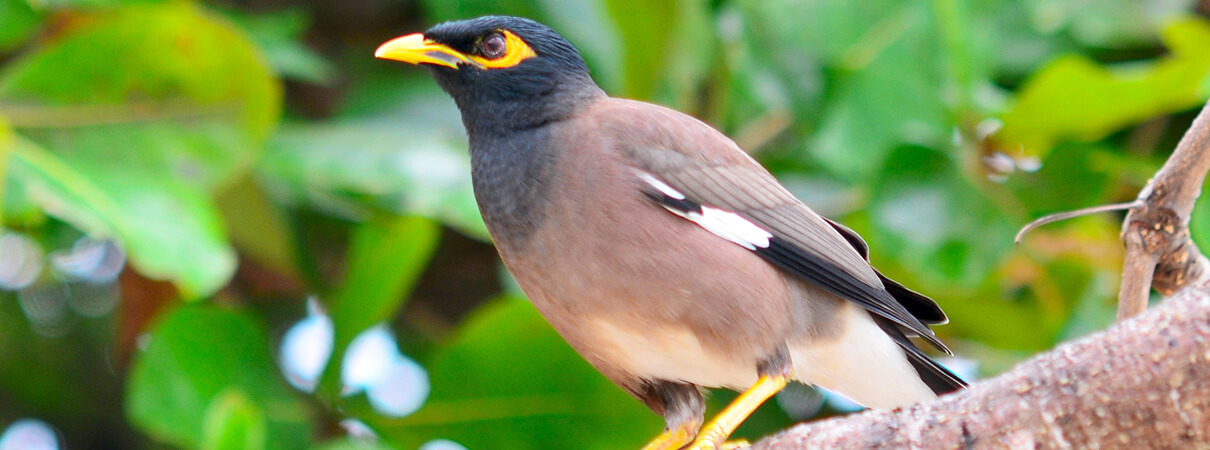
Common Myna by NRT, Shutterstock
Common Myna
INTRODUCED. Mynas were introduced to Hawaii in 1866 to control cutworm moths, an agricultural pest. Native to India, the Himalayas, and the Middle East, the birds quickly spread throughout the main islands. No bird has been more vilified in Hawai‘i than the myna. It has been described as noisy and quarrelsome, and accused of spreading invasive weeds, preying on seabird nests, competing with native ‘Ō‘ōs for nest cavities, and even setting buildings on fire with lighted cigarettes!
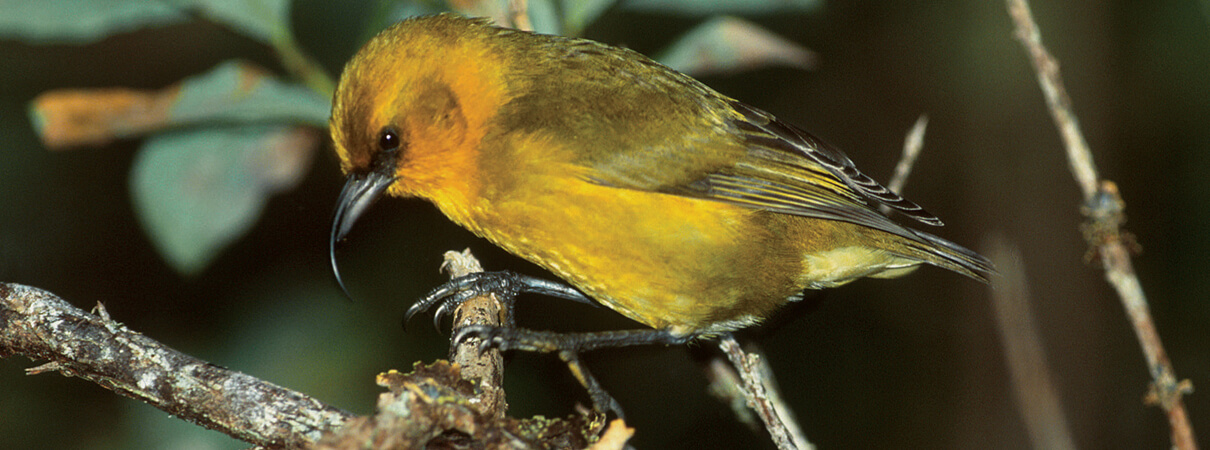
‘Akiapōlā‘au by Jack Jeffrey
‘Akiapōlā‘au
NATIVE. One of the most spectacular of the surviving honeycreepers, the “Aki” uses the lower part of its bill to hammer at bark like a woodpecker and a long, downward-curved upper bill to extract insects. Scientists believe this specialized foraging behavior contributes to the bird having among the longest periods of parental care of any passerine bird, caring for its young sometimes over a year. Found only on Hawai‘i Island in four distinct populations, the endangered ‘Akiapōlā‘au now numbers fewer than 1,200 birds. Land clearing, habitat degradation by non-native grazing mammals, and avian malaria are its most serious threats. But at the Hakalau Forest National Wildlife Refuge, fencing, pig removal, and intensive reforestation are helping the bird's population to rebound.
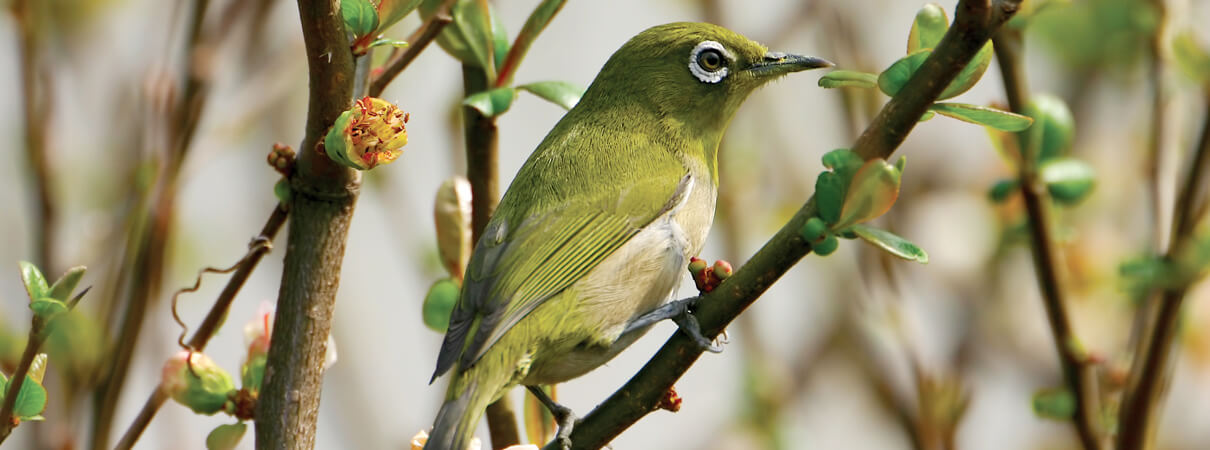
Japanese White-eye by Keith Tarrier, Shutterstock
Japanese White-eye
INTRODUCED. The Hawaii Board of Agriculture and Forestry first introduced white-eyes in 1929 to control pests. Native to China, Taiwan, and Japan, they spread throughout the main islands and may now be the most abundant bird species. Their migratory behavior probably aided their rapid spread: There are records of birds at sea between the main islands and at Johnston Atoll, nearly 750 miles southwest of Kaua'i. White-eyes are believed to carry avian malaria, and scientists hotly debate whether they compete with native forest birds.
Editor's Note: Learn more about how ABC is working to protect critical remaining habitat for Hawaii's native birds.


















































